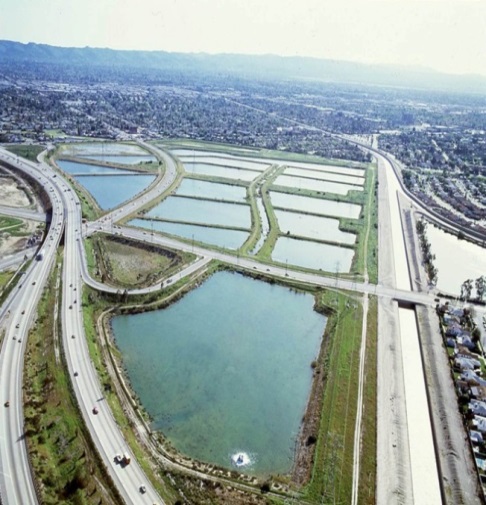
Construction began this week on a project at the Tujunga Spreading Grounds that is expected to double the amount of storm water that can be captured at the facility to about 5 billion gallons per year.
The $29 million project, slated to be completed in 2018, was designed by the county’s Department of Public Works, in collaboration with the city’s Department of Water and Power. Once completed, the spreading grounds will be able to conserve enough water each year to supply 48,000 households in Los Angeles.
The project will expand an existing facility to increase the spreading grounds’ current capture and storage ability from 2.5 billion gallons, or 8,000 acre-feet of water, to 5 billion gallons or 16,000 acre-feet per year.
LADWP General Manager David Wright said storm water that would otherwise flow out to the Pacific Ocean will be conserved as the result of this project.
“With the Tujunga Spreading Grounds Enhancement Project, we ensure that these valuable water resources don’t go to waste,” he said.
The additional water will be conserved in the San Fernando Groundwater Basin, which will increase the local water supply and potentially reduce Los Angeles’ dependence on imported water, according to county officials.
County Public Works Director Gail Farber said that while capturing storm water is an ongoing “mission” for the flood control district that will oversee the spreading grounds, “the severity of the current drought and the challenges of climate change, population growth and an unreliable imported water supply require the combined attention and effort of the entire region.”
Mayor Eric Garcetti, who joined county and city officials for a groundbreaking ceremony, said the project is “an important step toward securing L.A.’s future in this historic drought.”
“I’m grateful to our county partners for working with us to conserve and capture a precious resource,” he said.
Councilwoman Nury Martinez, whose district includes the spreading grounds, said a “conveyor belt system” will be used to take dirt out of the project area, which means fewer trucks will clog up nearby streets during construction.
The project will also include an open space area and a walking path for nearby residents.
“While we’re building an environmentally sound improvement for our city, we’re also beautifying the neighborhood nearby,” Martinez said.


